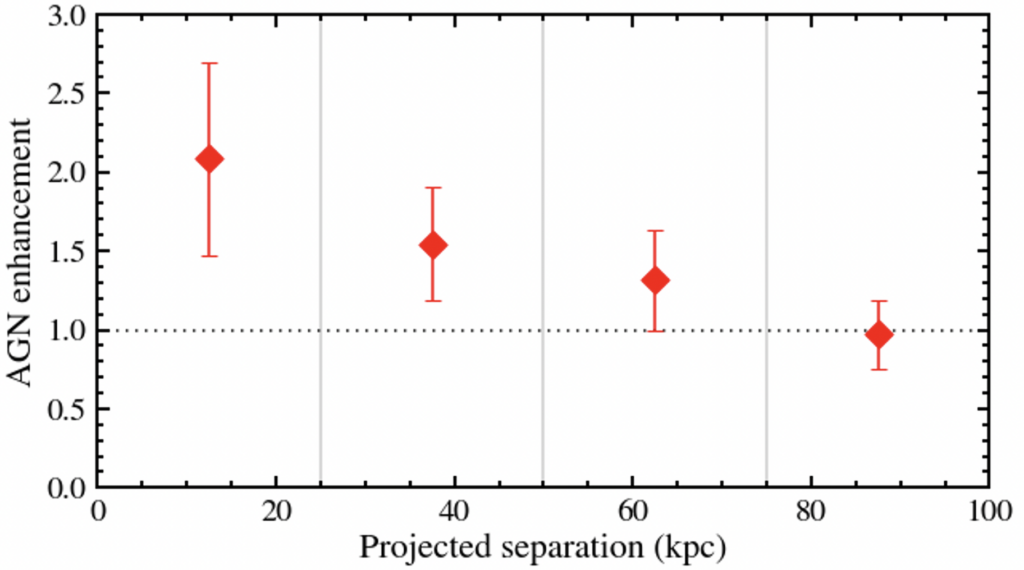A new study, led by Sean Dougherty who carried out this work whilst an MPhil student in our group, was publicly released today. The study found that supermassive black holes obscured by dust are more likely to grow and release tremendous amounts of energy, when they are inside galaxies that are expected to collide with a neighbouring galaxy. It is published in Monthly Notices of the Royal Astronomical Society and is available on the arXiv.
A press release was produced to celebrate the results, shared by both the Royal Astronomical Society and Newcastle University.
This study presents a new statistical method to overcome the previous limitations of measuring accurate distances of galaxies and supermassive black holes. It applies a statistical approach to determine galaxy distances using images at different wavelengths (i.e., ‘photometric redshifts’) and removes the need for spectroscopic distance measurements for individual galaxies, which are only available for a small fraction of galaxies.
They applied this new method to hundreds of thousands of galaxies in the distant universe (looking at galaxies formed 2 to 6 billion years after the Big Bang) to better understand the so-called ‘cosmic noon’, a time when most of the Universe’s galaxy and black hole growth is expected to have taken place.
Using this new method, Sean investigated the number of growing supermassive black holes (called active galactic nuclei), in galaxies which are in close pairs with other galaxies. This was compared to the number found in galaxies without close pairs i.e., ‘isolated’ galaxies. In agreement with previous work, it is found that the fraction of galaxies containing active galactic nuclei identified with X-rays is the same for both galaxy pairs and isolated galaxies. However, those which are hidden in the X-rays due to obscuring dust, and are only seen in infrared light, are twice as common in the close galaxy pairs.

The difficulty in finding these black holes and in establishing precise distance measurements explains why this result has previously been challenging to pin down for these distant `cosmic noon’ galaxies.
The expectation is that these close galaxy pairs are on the route to colliding, and eventually merging. This process helps drive gas down onto the black holes. On its journey this gas releases a tremendous amount of energy and heats up the surrounding dust, which glows in the infrared.
